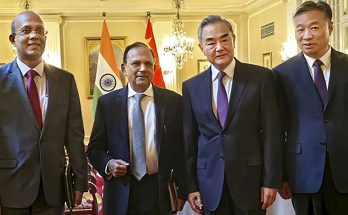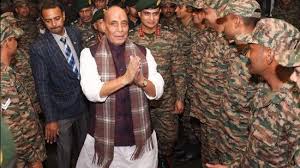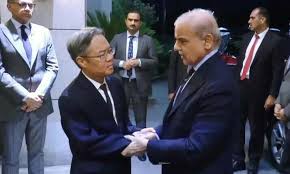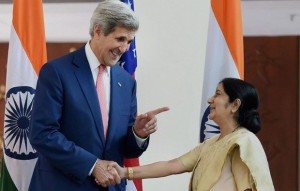 Ahead of the last meeting between Prime Minister Narendra Modi and US President Barack Obama in China, India and the US will hold their second strategic and commercial dialogue in New Delhi, which will hopefully bring to closure some key issues on the bilateral agenda and map the way ahead.
Ahead of the last meeting between Prime Minister Narendra Modi and US President Barack Obama in China, India and the US will hold their second strategic and commercial dialogue in New Delhi, which will hopefully bring to closure some key issues on the bilateral agenda and map the way ahead.
The Strategic Dialogue will be co-chaired by External Affairs Minister Sushma Swaraj and US Secretary of State John Kerry and the Commercial Dialogue will be co-chaired by India’s Commerce Minister Nirmala Sitharaman and US Commerce Secretary Penny Pritzker. The August 30 talks, which will be followed by the Modi-Obama meeting in on the sidelines of the G20 summit in Hangzhou, will cap more than a decade of blossoming of the India-US relations, which were transformed by the pathbreaking India-US nuclear deal in the summer of 2005.
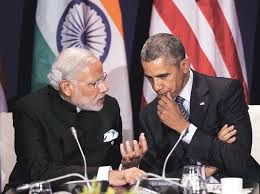 The India-US relations are at an all-time high, with bilateral trade climbing up to over $109 billion, marking a nearly three-fold increase from $37 billion in 2005.
The India-US relations are at an all-time high, with bilateral trade climbing up to over $109 billion, marking a nearly three-fold increase from $37 billion in 2005.
The narrative of India in the US has changed radically with the Modi government embarking on path-breaking second generation economic reforms, including the passage of the landmark Goods and Service tax and the lifting of FDI caps in crucial sectors like defence and insurance.
Two-way investments are growing with the US FDI in India exceeding $28 billion and India’s investment in the US reaching over $11 billion. There are still festering issues relating to protection of intellectual property rights, IT visa fees and localisation requirements, but the economic relationship is poised for an upswing.
Strategic Comfort
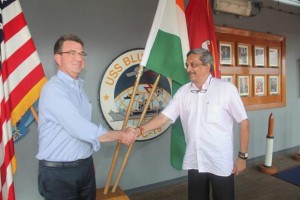 On the strategic level, the visceral distrust that once marked the India-US relations is becoming a distant memory, with the world’s two largest democracies proactively cooperating across a gamut of cross-cutting issues and aligning their perspectives on stability in the Indian Ocean and the Asia-Pacific region. PM Modi’s visit to the US in June 2016, his fourth since taking office, was a milestone that saw the US declaring India as a major defence partner, which entails sharing of sensitive defence technologies reserved only for close allies of Washington. By and large, there is greater strategic congruence and comfort level in the relationship, with a strong bipartisan consensus on taking forward what President Obama has called “the defining partnership of the 21st century.”
On the strategic level, the visceral distrust that once marked the India-US relations is becoming a distant memory, with the world’s two largest democracies proactively cooperating across a gamut of cross-cutting issues and aligning their perspectives on stability in the Indian Ocean and the Asia-Pacific region. PM Modi’s visit to the US in June 2016, his fourth since taking office, was a milestone that saw the US declaring India as a major defence partner, which entails sharing of sensitive defence technologies reserved only for close allies of Washington. By and large, there is greater strategic congruence and comfort level in the relationship, with a strong bipartisan consensus on taking forward what President Obama has called “the defining partnership of the 21st century.”
NSG diplomacy: Can US pull it off?
 With the bilateral relationship on a firm footing, the focus will be logically on the unfinished agenda during the last few months of the Obama presidency. For India, getting full membership of the Nuclear Suppliers Group tops the agenda as only a strong push from the US can swing around fence-sitters and sceptics.
With the bilateral relationship on a firm footing, the focus will be logically on the unfinished agenda during the last few months of the Obama presidency. For India, getting full membership of the Nuclear Suppliers Group tops the agenda as only a strong push from the US can swing around fence-sitters and sceptics.
There will be opponents and sceptics, and for all gloomy prognostications about the decline of America, the US still remains the preeminent political, economic and military power which can make things happen. India has singled out China as the sole obstacle in the way of India’s NSG membership and is working on a parallel track to win Beijing’s support.
But in the end, it will be the US which will have to do heavy diplomatic lifting, as George Bush did for the NSG waiver for India in September 2008, to pull off the NSG membership for India. That’s why all eyes will be on the meeting between PM Modi and President Obama in the Chinese city of Hangzhou, likely September 4.
The talks between John Kerry and External Affairs Minister Sushma Swaraj in New Delhi are expected to firm up a roadmap for facilitating India’s entry into the coveted club which controls the global flow of nuclear material.
By linking the ratification of the Paris climate accord with its NSG membership, India has crafted a smart strategy as fulfilling its INDC commitments will inevitably entail a major upsurge in the production of clean atomic electricity. It remains to be seen how effective this strategy will be as President Obama has invested heavily in the Paris accord and has counted on India’s support for its success. Issues relating to climate change, green technologies and green finance will figure prominently in the strategic and commercial dialogue.
Bolstering Defence Ties
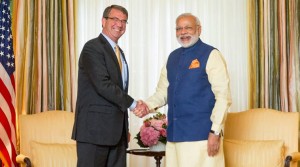
Besides the NSG issue, India and the US are expected to impart a fresh impetus to their burgeoning defence and security partnership. Defence Minister Manohar Parrikar is in the US for talks with his counterpart Ashton Carter. If all goes according to plan, India and the US are expected to sign the long-negotiated Logistics Exchange Agreement (LEMOA), which will allow the US and India to access each other’s military supplies and refuelling capabilities through ports and military bases. It will also facilitate the bilateral flow of supplies, spare parts and services from land facilities, air bases, and ports, which can then be reimbursed. The signing of LEMOA will be a leap of faith on India’s part and will bring it in a tighter strategic embrace with the US, without becoming an ally of the world’s sole superpower.
The US has emerged as India’s top defence supplier (outstripping Russia) with $13 billion imports. One can expect substantive discussions on six Pathfinder Projects, including the ones on aircraft technology and jet engine technology, under the Defence Trade and Technology Initiative (DTTI), which has transformed the India-US defence relationship from the buyer-seller model to that of co-production and co-manufacturing. The two countries are expected to sign a framework agreement on cyber security, which will complement their growing economic and military relationship.
Saying goodbye: Play it on
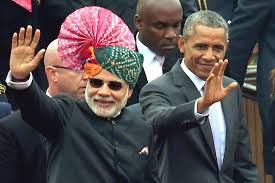 It may be purely coincidental that the two leaders will be meeting for the last time in China, but it is laden with immense symbolism. In China, one can’t but talk about China, and managing the dragon amid the geopolitical ferment in the region will be on top of their mind as the two leaders bid adieus.
It may be purely coincidental that the two leaders will be meeting for the last time in China, but it is laden with immense symbolism. In China, one can’t but talk about China, and managing the dragon amid the geopolitical ferment in the region will be on top of their mind as the two leaders bid adieus.
In the end, with so much going on between the world’s largest democracies, PM Modi and President Obama will surely have a lot to commend each other for bringing the India-US relationship this far. Hesitations of history are passe, and “a new symphony is in place” as PM Modi said memorably in his speech to the US Congress. It’s time to play on, raise the bar and aim big…
Author Profile

- Manish Chand is Founder-CEO and Editor-in-Chief of India Writes Network (www.indiawrites.org) and India and World, a pioneering magazine focused on international affairs. He is CEO/Director of TGII Media Private Limited, an India-based media, publishing, research and consultancy company.
Latest entries
 India and the WorldJune 16, 2025Amid Pakistan-Turkey nexus, Cyprus joins India against cross-border terror
India and the WorldJune 16, 2025Amid Pakistan-Turkey nexus, Cyprus joins India against cross-border terror India and the WorldMay 8, 2025Pahalgam payback: India exposes Pakistan’s lies, misuse of religious sites for training terrorists
India and the WorldMay 8, 2025Pahalgam payback: India exposes Pakistan’s lies, misuse of religious sites for training terrorists India and the WorldMay 3, 2025IMEEC provides a democratic alternative to BRI: Italy’s former foreign minister (Interview)
India and the WorldMay 3, 2025IMEEC provides a democratic alternative to BRI: Italy’s former foreign minister (Interview) India and the WorldApril 21, 20253T Template for India-US Mega Partnership
India and the WorldApril 21, 20253T Template for India-US Mega Partnership





